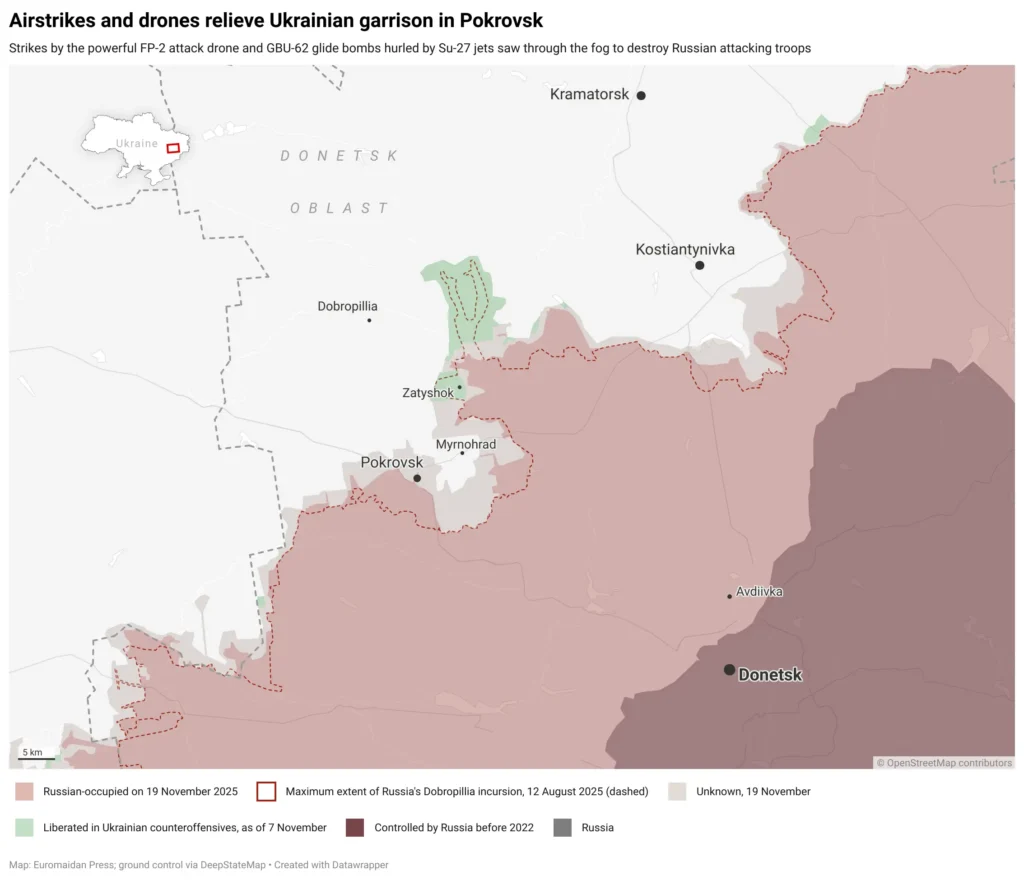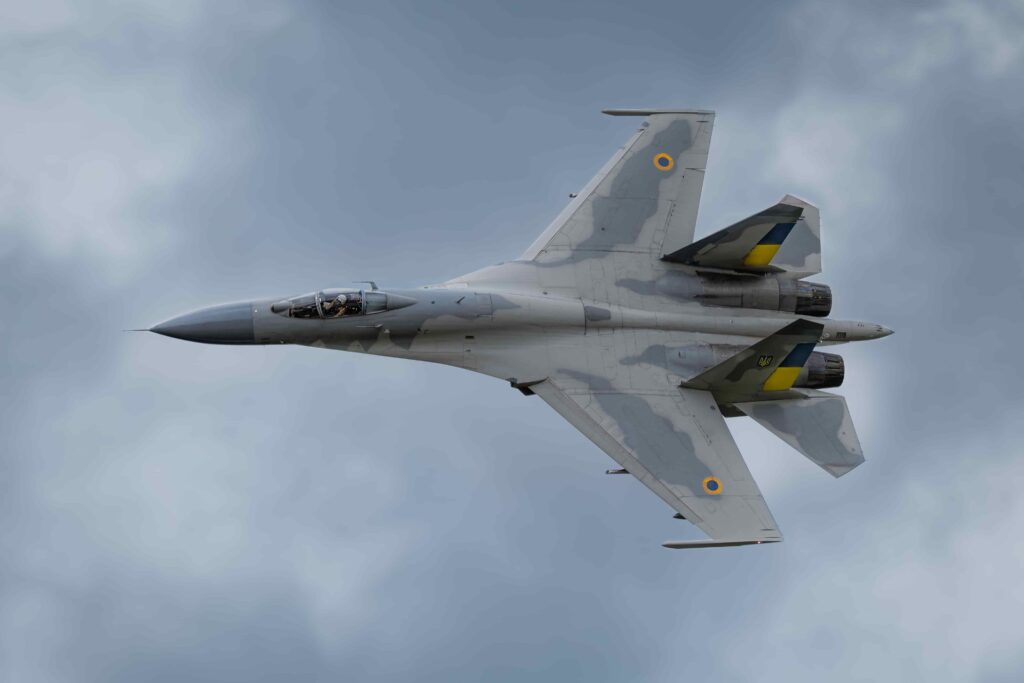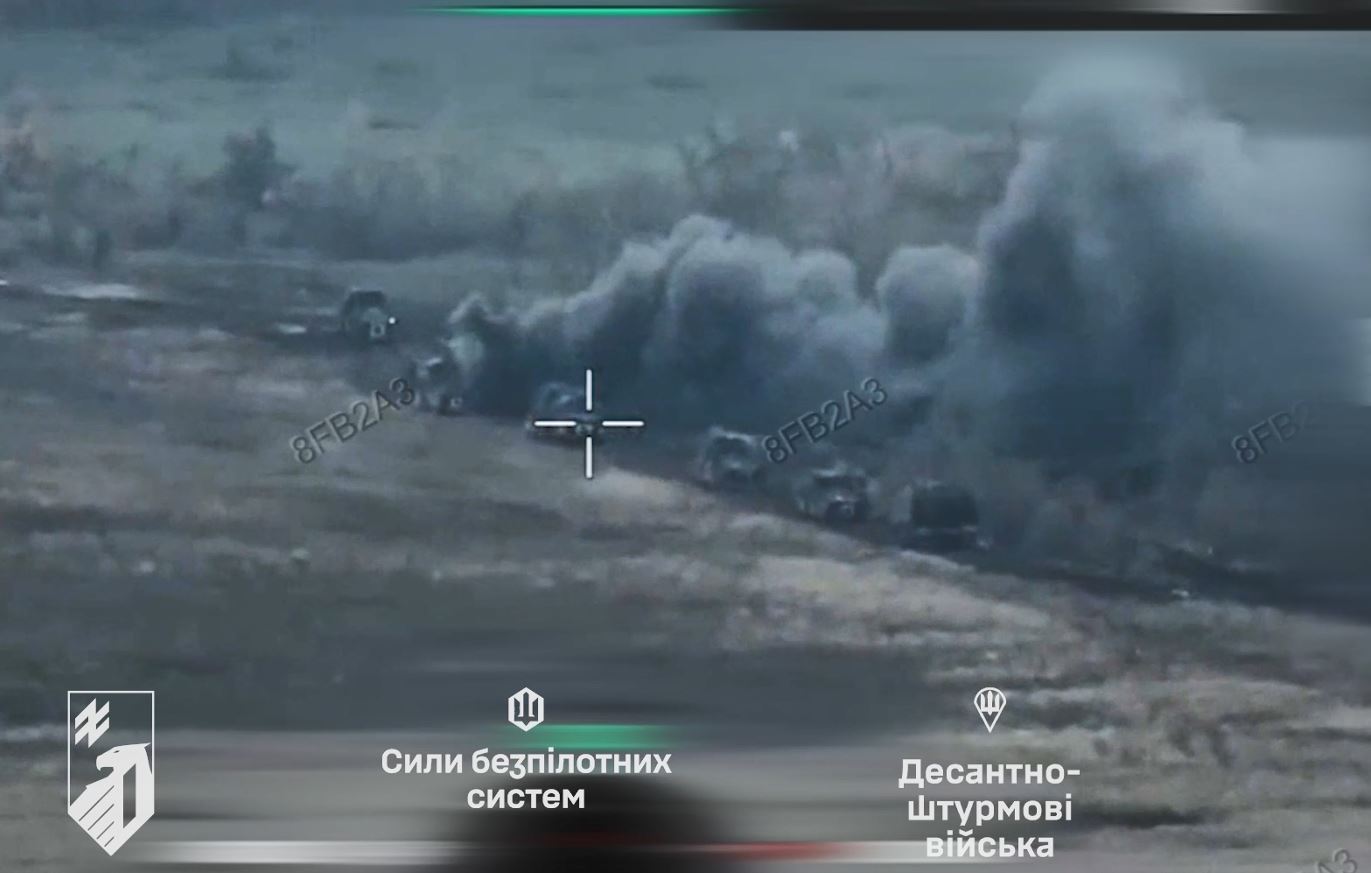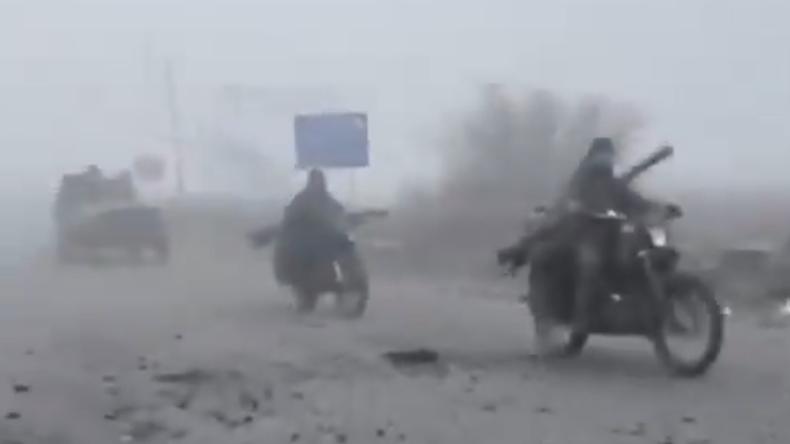- Ukrainian forces are holding open an escape corridor north of Pokrovsk
- Russian forces are trying to close the corridor in order to trap the Ukrainians
- Bad weather ground and blinds Ukraine's drones and allows the Russians to advance
- But Ukraine's glide bombs and FP-2 drones can see right through the fog
Ukrainian commandos clinging to positions on the northeastern edge of Pokrovsk are getting some powerful support—from the air.
Ukrainian air force Sukhoi Su-27s have dropped precision glide bombs. Fire Point FP-2 drones flown by Ukraine's special operations command have added to the aerial onslaught.
The air-delivered firepower may have blunted Russian advances in and around Pokrovsk in recent weeks.
But the effect is likely to be temporary. Russian troops outnumber Ukrainian troops five to one in Pokrovsk and neighboring Myrnohrad. Even with help from the air, the Ukrainians are losing the long battle for the two settlements in eastern Ukraine's Donetsk Oblast.

Russian troops from the Center Group of Forces first infiltrated Pokrovsk, a mining town with a pre-war population of 60,000, from the south in August following a yearlong siege. That same month, a Russian incursion north of Pokrovsk drew away the bulk of Ukraine's reserves. Meanwhile, the Russian 51st Combined Arms Army pushed around Pokrovsk and Myrnohrad from the northeast.
The onset of winter brought bad weather, which grounded and blinded many of Ukraine's drones. The Russians accelerated their bloody march through September, October, and November—creeping into Pokrovsk and Myrnohrad even as the Ukrainian 1st Azov Corps steadily rolled back the Russian incursion north of Pokrovsk.
By mid-November, the Ukrainian 7th Rapid Reaction Corps was retreating in Pokrovsk.
A clutch of elite Ukrainian formations, including the 425th Assault Regiment, the Tymur Special Unit and the 3rd Special Purpose Regiment marched or helicoptered into northeastern Pokrovsk to cover the 7th Rapid Reaction Corps' retreat—and to hold open a corridor for the two brigades still in Myrnohrad, the 38th Marine Brigade and 25th Air Assault Brigade, to eventually make their own escape.

Cutting off the retreat
But the Russians are determined to head off what has, for the most part, been an "orderly" retreat, according to observer Thorkill. Outnumbered and in danger of being outmaneuvered, the Ukrainians called in air support.
Attacking under the cover of winter fog, Russian infantry consolidated in a building in northeastern Pokrovsk on or just before Thursday. A direct counterattack may have been too risky, so the Ukrainian air force handled it.
At least one air force Sukhoi Su-27 braved Russian air defenses and lobbed 1,100-kg GBU-62 precision glide bombs at the Russians' new position.
Trending Now
Ukraine's precision strikes pierce winter fog
Guided by satellite and an internal inertial system, the American-made GBU-62 sees right through the bad weather that can blind smaller first-person-view drones.
On or just before Friday, the Russian 51st Combined Arms Army made a move on the village of Zatyshok, 6 km north of Myrnohrad. With smaller drones apparently still grounded by the bad weather, the Ukrainian special operations command launched FP-2 drones.

With their forward-looking thermal cameras, the operator-steered FP-2s—each packing a powerful 100-kg warhead—could see just well enough through the clouds and fog to locate the Russians' position near Zatyshok. "Despite adverse weather, SOF drones successfully reached the target," the special operations command stated.
The bad-weather strikes were impressive on a technological level, but can't erase the Russians' overwhelming advantage in troops and equipment on the ground. After a year of hard fighting, the outnumbered Ukrainian force in and around the twin settlements is exhausted.
And now "the situation in the Pokrovsk–Myrnohrad pocket is becoming truly critical," according to the pro-Ukraine Conflict Intelligence Team.



